Epona – One Of The Oldest And Widely Known Celtic Deities
A. Sutherland - AncientPages.com - Epona is the Gaulish goddess of horses, donkeys, and mules. She was one of the oldest and most notable Celtic deities and was worshiped in ancient Rome.
Her name, 'Epona,' means 'mare,' and she was believed to be the protector of horses, donkeys, mules, and ponies.
A relief of the Gaulish horse goddess Epona from Salonica, Greek Macedonia, 4th century CE. Image via Wikipedia
As involved in ancient beliefs of many cultures, some scholars do not exclude that this goddess was often associated with death, similar to other mother goddesses. In that case, her symbol was a crow, a raven, or a dog symbolizing the afterlife.
As the guide (or companion) of souls, leading the deceased to the land of the dead, Epona had a mysterious key to opening the underworld (otherworld).
No doubt, Epona was a very popular deity in the Roman Empire, but as we said, she was not of Roman origin, for there were no such equestrian goddesses in the pantheon of these people. The Roman army adopted her worship and spread her cult throughout the empire. She was the only Celtic goddess granted a feast day (December 18).
Bas-relief of the Romano-Celtic goddess Epona, from Contern (Luxembourg), 2nd or 3rd century AD. Image credit: Owen Cook - CC BY-SA 4.0
The greatest concentration of inscriptions to Epona, along with altars and depictions of her, have been found in Roman Gaul, especially in Burgundy, and in the Metz-Trier and Meuse valley regions of Germany, Britain, Bulgaria, and North Africa as well.
In Celtic Gaul, Epona was initially associated with the beliefs of the tribe of Aedui, who inhabited the regions between Liger (Loire, the longest river in France) and Arar (the modern Saone river of eastern France).
In historical records, these people were remembered as allies of Rome, who in time supported Vercingetorix, a brave warrior who gathered an army of Gallic people against the Roman Empire and in 52 BC was defeated by Julius Caesar. At the same time, the Aeduians were incorporated into Roman Gaul.
Despite Epona's wide popularity in ancient times, very little is known about her. Many believe this goddess had many local incarnations and appeared under other names.
The motif of the "Lady of the Animals" lives on this religious depiction. Flanked by two horses, Epona is shown sitting on a throne holding a fruit basket on her lap. The Celtic goddess was revered as the patroness for wagoners. She was also popular among the military. The images was mainly occurred in the provinces of Gaul and Germania. Image credit: Rosemania - Flickr
However, there is one interesting mythological story about when our planet Earth was almost empty. There were no gods or humans, only the sea and the land. When the sea met the ground, a white mare, Eiocha, made of sea foam, was born.
In the vicinity of this critical event, a strong oak tree grew, giving support to "a plant with white berries of "foam tears" from the sea. The white mare, Eiocha, ate the berries and grew heavy with the child. She gave birth to the first god, Cernunnos. The birth was painful, and in her struggle, Eiocha ripped pieces of bark from the oak tree and threw them into the sea, thus creating the Giants of the Deep. Cernunnos was lonely and coupled with Eiocha to produce other gods: Maponus, Tauranus, Teutates, and the goddess Epona." 1
Horses for the Celts were vital because they were used for transport. In war and agriculture, it is only natural that the cult of the goddess - patroness of horses- constituted an essential part of their religious views. She was usually depicted on a horse, feeding a horse from her hand, leading two horses, or standing with horses around her.
Other attributes were a horn of plenty and a loaf of bread, which means she was also worshiped as a fertility goddess.
Written by – A. Sutherland AncientPages.com Staff Writer
Updated on January 30, 2023
Copyright © AncientPages.com All rights reserved. This material may not be published, broadcast, rewritten or redistributed in whole or part without the express written permission of AncientPages.com
Expand for references- Hourly History, Celtic Mythology
Green, Miranda. The Gods of Roman Britain.
Ross, Anne. Pagan Celtic Britain
More From Ancient Pages
-
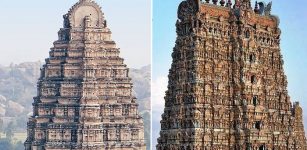 Vimana Temples – Architectural Marvel Of India
Civilizations | Dec 31, 2018
Vimana Temples – Architectural Marvel Of India
Civilizations | Dec 31, 2018 -
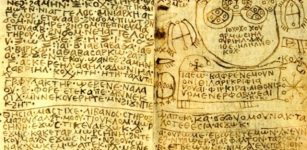 Ancient Mystery Of Baktiotha And The Egyptian Spell Book
Artifacts | Sep 4, 2015
Ancient Mystery Of Baktiotha And The Egyptian Spell Book
Artifacts | Sep 4, 2015 -
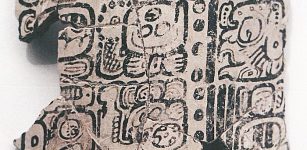 Painted Komkom Vase With Longest Hieroglyphic Text Unearthed In Belize
Archaeology | Apr 24, 2019
Painted Komkom Vase With Longest Hieroglyphic Text Unearthed In Belize
Archaeology | Apr 24, 2019 -
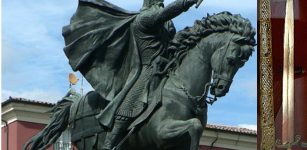 El Cid ’The Lord’ – Medieval Castilian Leader Known For His Courage And Extraordinary Military Skills
Featured Stories | Sep 20, 2021
El Cid ’The Lord’ – Medieval Castilian Leader Known For His Courage And Extraordinary Military Skills
Featured Stories | Sep 20, 2021 -
 Mystery Of The Forgotten Explorers And Ancient Artifacts That Re-Write History Of North And South America
Civilizations | Apr 13, 2020
Mystery Of The Forgotten Explorers And Ancient Artifacts That Re-Write History Of North And South America
Civilizations | Apr 13, 2020 -
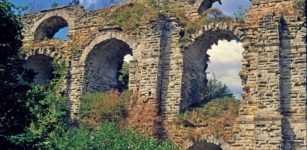 The 426-Km-Long Roman Aqueduct Provided Water For Constantinople – New Study
Archaeology | May 11, 2021
The 426-Km-Long Roman Aqueduct Provided Water For Constantinople – New Study
Archaeology | May 11, 2021 -
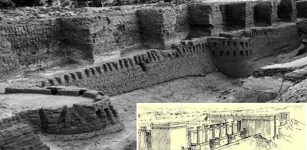 Massive Fortress Buhen In Ancient Capital Of Egyptian Nubia
Archaeology | Mar 20, 2017
Massive Fortress Buhen In Ancient Capital Of Egyptian Nubia
Archaeology | Mar 20, 2017 -
 Unique 8,000 Year-Old Child Burial Reveals Its Secrets
Archaeology | Nov 3, 2020
Unique 8,000 Year-Old Child Burial Reveals Its Secrets
Archaeology | Nov 3, 2020 -
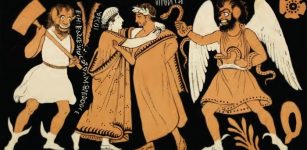 Tuchulcha: Wicked, Hideously Grotesque Etruscan Demon Identified With Both Male And Female Genders
Featured Stories | Jun 11, 2023
Tuchulcha: Wicked, Hideously Grotesque Etruscan Demon Identified With Both Male And Female Genders
Featured Stories | Jun 11, 2023 -
 Weapons Of Ancient Aztec Warriors Of Mesoamerica
Featured Stories | Mar 23, 2017
Weapons Of Ancient Aztec Warriors Of Mesoamerica
Featured Stories | Mar 23, 2017 -
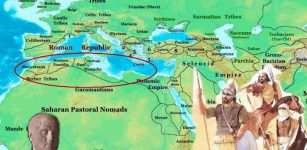 On This Day In History: Emperor Gordian II Loses The Battle Of Carthage – On Apr 12, 238 AD
News | Apr 12, 2016
On This Day In History: Emperor Gordian II Loses The Battle Of Carthage – On Apr 12, 238 AD
News | Apr 12, 2016 -
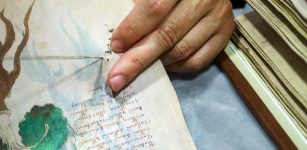 Mysterious Voynich Manuscript Was Written In Two Languages – Scientists Say
Archaeology | Apr 24, 2017
Mysterious Voynich Manuscript Was Written In Two Languages – Scientists Say
Archaeology | Apr 24, 2017 -
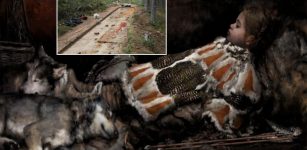 A Stone Age Child Buried With Bird Feathers, Plant Fibers And Fur Investigated In Finland
Archaeology | Nov 2, 2022
A Stone Age Child Buried With Bird Feathers, Plant Fibers And Fur Investigated In Finland
Archaeology | Nov 2, 2022 -
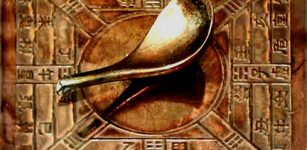 Magnetic Compass Was Invented In Ancient China
Ancient History Facts | Mar 18, 2016
Magnetic Compass Was Invented In Ancient China
Ancient History Facts | Mar 18, 2016 -
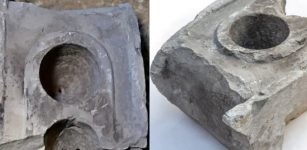 2,000-Year-Old Measuring Table With Stone Weights Unearthed In Jerusalem
Archaeology | Jan 16, 2020
2,000-Year-Old Measuring Table With Stone Weights Unearthed In Jerusalem
Archaeology | Jan 16, 2020 -
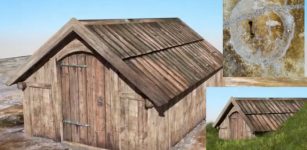 Very Rare Discovery: Viking Age Mortuary House Unearthed In Central Norway
Archaeology | Sep 29, 2019
Very Rare Discovery: Viking Age Mortuary House Unearthed In Central Norway
Archaeology | Sep 29, 2019 -
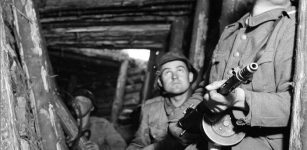 On This Day In History: Moscow Armistice Signed Between Finland And Soviet Union – On Sep 19, 1944
News | Sep 19, 2016
On This Day In History: Moscow Armistice Signed Between Finland And Soviet Union – On Sep 19, 1944
News | Sep 19, 2016 -
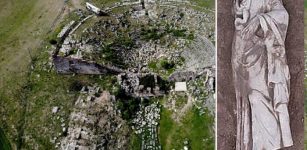 Statue Of Greek Health Goddess Hygieia – Unearthed
Archaeology | Aug 24, 2021
Statue Of Greek Health Goddess Hygieia – Unearthed
Archaeology | Aug 24, 2021 -
 Mystery Of Acoma – Sky City Of And People Of The White Rock Reveal A Surprise
Civilizations | Aug 16, 2018
Mystery Of Acoma – Sky City Of And People Of The White Rock Reveal A Surprise
Civilizations | Aug 16, 2018 -
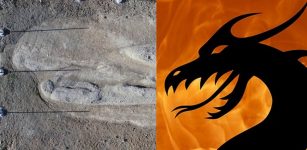 Ancient Dragon Stone That Inspired Legends Discovered In Turkey
Archaeology | Dec 12, 2018
Ancient Dragon Stone That Inspired Legends Discovered In Turkey
Archaeology | Dec 12, 2018



